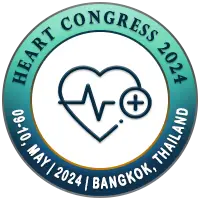
Johann Christopher
Care Hospital, IndiaTitle: Role of CMR in Heart Failure
Abstract
Heart failure (CHF) is a complex syndrome and causes a major impact on the health care system. CHF prototypes are classified according to the left ventricular ejection fraction (EF). Current guidelines base recommendations on the following desgnations: CHF with preserved ejection fraction (HFpef: EF>50%) CHF with mildly reduced EF (HFmrEF:EF 41- 49%) ; CHF with improved EF (HFimpEF; history of HFref with 10% EF improvement ); CHF with reduced EF (HFref: EF<40%). An important assessment in patients with chronic heart failure (CHF) is whether left ventricular dysfunction is due to coronary artery disease (CAD) or due to non-coronary etiology. This differentiation is clinically important as ischemic cardiomyopathy (ICM) patients are associated with a shorter mean survival than patients with idiopathic dilated cardiomyopathy (DCM). In addition, the management plan is altered as patients with ICM may benefit from revascularization and secondary preventive pharmacotherapy, whereas patients with DCM may have better response to the standard heart failure medication including beta blockers, SGL2I, ARN and MRAs. [FIG:1] Determining the exact etiology in this group can be challenging using the currently available imaging techniques such as echocardiography, radionuclide imaging or coronary angiography, especially if history of CAD is lacking.
Biography
To be updated

